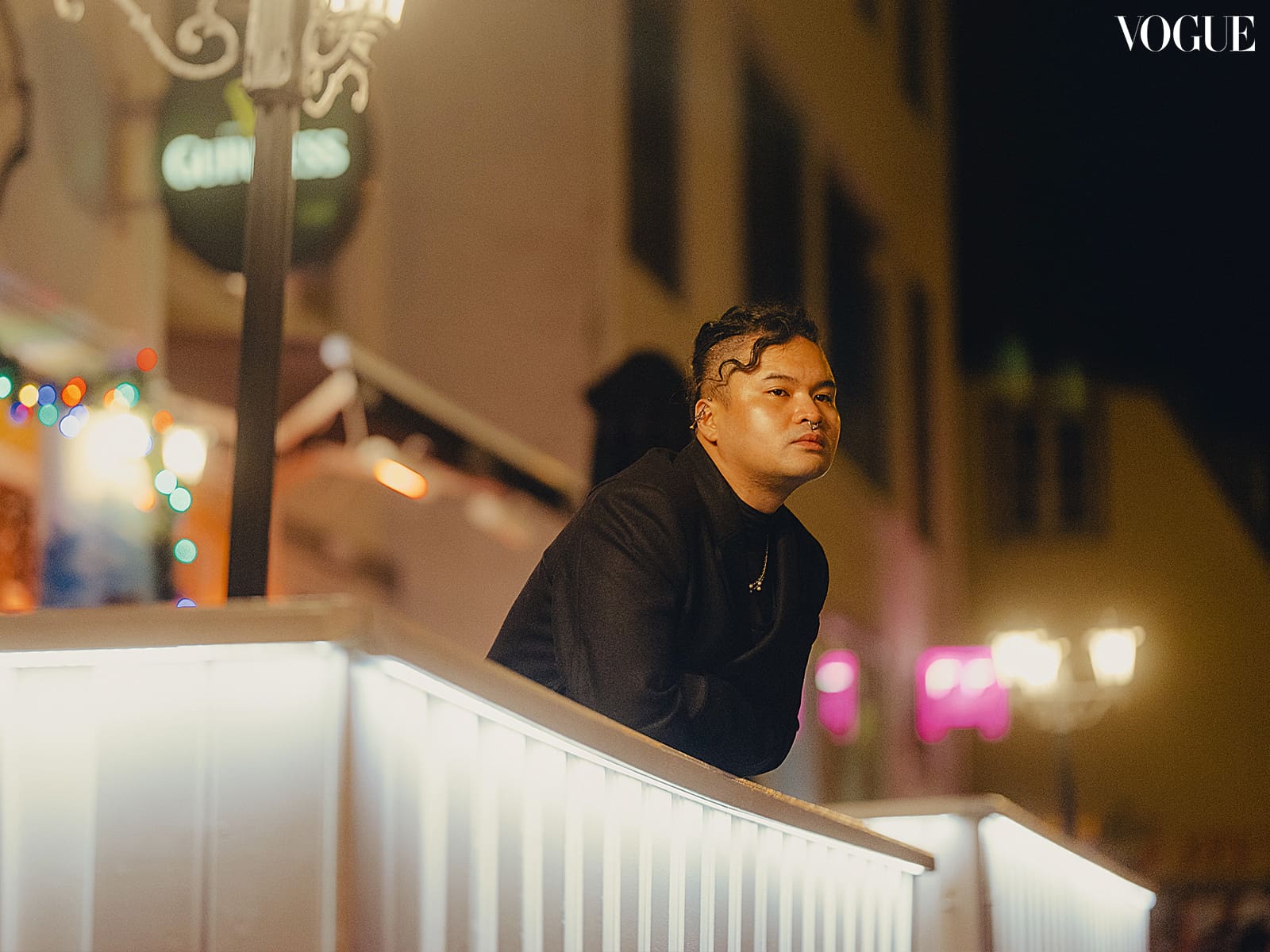Melanie Ubaldo. Photographed by Rozette Rago.
Melanie Ubaldo. Photographed by Rozette Rago.
Darren Mark, Melanie Ubaldo, and Dyrfinna Benita Basalan make up this exciting new group.
On a cold December night in downtown Reykjavik, I sat in a warmly lit apartment eating kimchi fried rice with spam, boiled eggs, and bagoong with Darren Mark, a 30-year-old artist who prepared the meal, and his longtime friends and collaborators Melanie Ubaldo, 31, and Dýrfinna Benita Basalan, 30. Individually, they are artists working in visual arts, music, costume design, and fashion. Together, they form the collective called Lucky 3, named after the Philippine instant noodle brand. They are all Icelandic of Filipino descent.
In 2022, they received the Motivational Award from the Icelandic Visual Arts Council, one of the most prestigious honors a young up and coming Icelandic artist could receive. This year, they are all fully booked with individual and group shows in different parts of Iceland and abroad.
“We are the loudest brown people in the arts scene of Iceland,” says Melanie, who came to Iceland from Maripipi Island when she was 13 years old. She met Darren and Dýrfinna at the Iceland University of the arts.
It didn’t immediately occur to Melanie that she stood out. She was bullied and called derogatory names growing up, but she had great teachers who saw her talent in art and encouraged her to keep pursuing it. Her mother felt differently at the time though. One of her most famous pieces called “Thanks Mom” is a massive piece made up of stitched together canvases from different paintings she did in school. “Melanie, I’m very disappointed in you” is written in red paint—her mother’s reply when she told her she wanted to study art.
Darren moved to Iceland with his family when he was eight years old. His main medium for his art is fashion, and the pieces he creates are strong and daring, reminiscent of Kei Ninomiya. Currently, he is working in the costume design department of a popular HBO series. “How I do my work always goes back to how I like to wear stuff,” explains the creative, who also designs the outfits that Lucky 3 wears in their shows. “I’m exploring the functionality of clothing.”

Dýrfinna was born and raised in Iceland. She works across multiple disciplines, including music where she performs under the name Countess Malaise. Her work deals with loneliness and survival, laced with her experiences of being both Icelandic and Filipino.
She recalls kids reacting weirdly to the lunches her mom would pack for her, usually leftovers from dinner the night before. “They would say ‘ew’ with a weirded out look on their faces. It made me feel ashamed and alone,” she says, adding that the bullying only got worse from there. For her solo show in the spring of 2022, she gave guests a small glimpse into her life as a mixed race child in Iceland. She created a scaled up school table and chair where guests could climb up and sit with their feet dangling. On the table, she carved texts and drawings about not fitting in and feeling different.
Staged reality
Their most recent group show was called “PUTI,” an eight-hour performance with installations and sculptures. The gallery was outfitted with three cameras and a television showing the live footage of the performance. They put mud on the floor at the entrance and a fountain made of cleaning materials in the middle of the room.
As guests walked in, they tracked mud on the floor. Lucky 3, dressed as janitors in white jumpsuits, followed closely behind their mostly caucasian guests as they walked in and mopped their muddy footprints off the floor. When non-white guests came into the room, they nodded and said hi instead.
“A low paying job like cleaning is usually reserved for third-world labor and immigrants,” Melanie says. “As agents of an oppressed and exploited class, having done cleaning jobs ourselves before, we didn’t want it to be a quirkily staged reality, but rather a paradoxically mediated presence producing a disruption that questions our relationship to contemporary labor and the people who do these jobs.”
There are so many things that make Iceland a remarkable place. The country’s natural beauty, from sweeping landscapes to its world famous geothermal spas, attracts hundreds of thousands of visitors per year. On top of that, the country has an exceptional quality of living with a robust social welfare system and a low crime rate. It’s easy to fantasize about an easy life there, but the work of Lucky 3 provides a window into the immigrant experience.

As up and coming artists, they often get asked to talk about their experiences as non-white Icelandic artists, even in events that don’t necessarily have anything to do with them. While I was having dinner with them, Dýrfinna shared with the group that they received an offer to lead a lecture about their work at a gallery in Reykjavik showing an African artist’s photography depicting queer life in Africa. This offer immediately confused the three of them, but they also said this was something that happened a lot. They often feel tokenized as the only visible artists of color in Iceland.
These experiences only serve to motivate Lucky 3 to push through. Melanie’s piece “Thanks Mom” is in the permanent collection of the Reykjavik Art Museum now. The National Art Museum just acquired a piece from her last year as well. They hope their unapologetic presence in the scene will encourage more people of color in Iceland to break through the arts scene. In the meantime, the prolific trio will keep putting their work out there.
